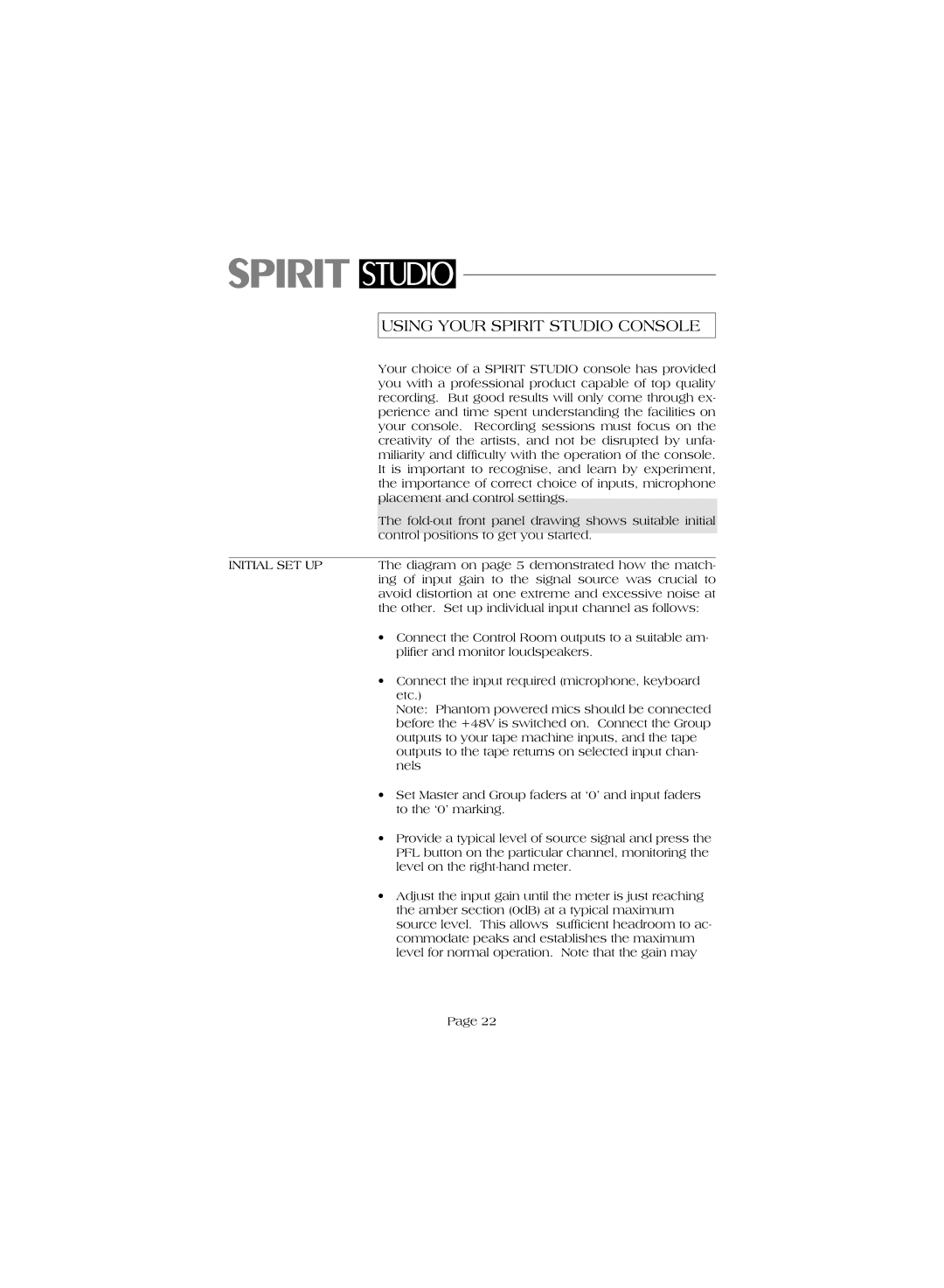
USING YOUR SPIRIT STUDIO CONSOLE
| Your choice of a SPIRIT STUDIO console has provided | |
| you with a professional product capable of top quality | |
| recording. But good results will only come through ex- | |
| perience and time spent understanding the facilities on | |
| your console. Recording sessions must focus on the | |
| creativity of the artists, and not be disrupted by unfa- | |
| miliarity and difficulty with the operation of the console. | |
| It is important to recognise, and learn by experiment, | |
| the importance of correct choice of inputs, microphone | |
| placement and control settings. | |
| The | |
| control positions to get you started. | |
|
|
|
INITIAL SET UP | The diagram on page 5 demonstrated how the match- | |
| ing of input gain to the signal source was crucial to | |
| avoid distortion at one extreme and excessive noise at | |
| the other. Set up individual input channel as follows: | |
| ∙ Connect the Control Room outputs to a suitable am- | |
| plifier and monitor loudspeakers. | |
| ∙ Connect the input required (microphone, keyboard | |
| etc.) | |
| Note: Phantom powered mics should be connected | |
| before the +48V is switched on. Connect the Group | |
| outputs to your tape machine inputs, and the tape | |
| outputs to the tape returns on selected input chan- | |
| nels | |
| ∙ Set Master and Group faders at ‘0’ and input faders | |
| to the ‘0’ marking. | |
| ∙ Provide a typical level of source signal and press the | |
| PFL button on the particular channel, monitoring the | |
| level on the | |
| ∙ Adjust the input gain until the meter is just reaching | |
| the amber section (0dB) at a typical maximum | |
| source level. This allows sufficient headroom to ac- | |
| commodate peaks and establishes the maximum | |
| level for normal operation. Note that the gain may | |
Page 22
